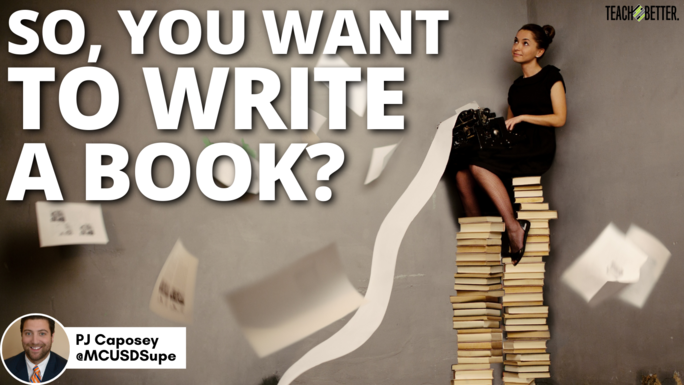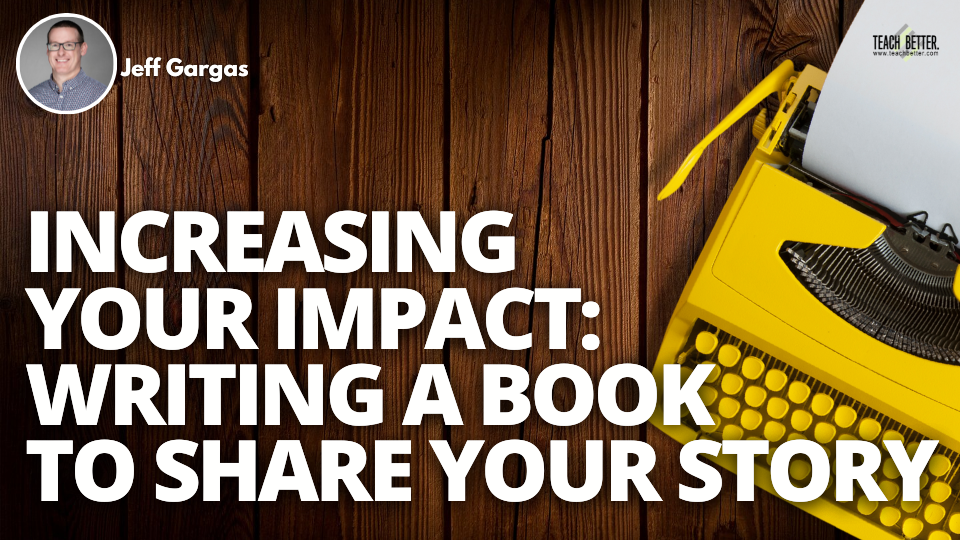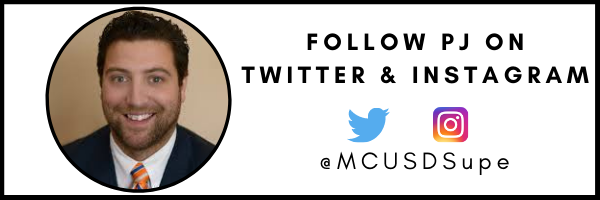TL;DR:
- If you want to write a book, there are certain things you should know.
- Anyone who wants to write a book should consider the 6 main “Ps”- prospectus, publishers, product, partners, promotion, and payment.
- Understanding these components will help give you the means to write your book and share your words with the world.
So, You Want to Write a Book?
So, I got lucky. I mean it. And I do not mean it in the sense of “luck is when opportunity meets preparation.” I mean, I simply hit the jackpot on a gas station slot machine when I threw in my two bucks of change my first time playing kind of lucky.
About a decade ago, I wrote a blog as part of an assignment for graduate school, and it was published to Edutopia. Edutopia was then, and still is now, one of the most respected educational websites. A few weeks went by, and I was contacted by a large educational publisher. After about five back-and-forth emails, I was encouraged to write a book.
Let me be clear, eight books and hundreds (if not thousands) of blogs later, this has NEVER happened to me again. So, while the initial circumstances that led to me becoming a published author will likely not be yours, I have had the good fortune of staying “in the game” long enough to understand how to maneuver in an industry that is tough to figure out from the outside looking in.
My fear is that if the industry is not explained, your amazing ideas may stay locked inside of your head. And the world will miss out on your brilliance. Click To TweetIn the past decade, I have had eight books published by six different companies. In addition, I have co-written books with five amazing authors. As a result, I have learned a few things about the publishing industry. Once you are “in the industry” some of these things seem to be standard and make sense. But every once in a while, I will have a conversation with an aspiring writer and realize just how much of the industry seems mysterious and nebulous to anyone wanting to get a foot in the door.
Thus, the intent of this blog is to shine light on the process and to demystify the industry for anyone who has a dream to search their name on Amazon and have their very own book pop up. My fear is that if the industry is not explained, your amazing ideas may stay locked inside of your head. And the world will miss out on your brilliance.
*Disclaimer – When I started discussing this blog with #TBT, I warned them of how long this piece could unintentionally become. And while this is longer than your typical blog, I have done my best to narrow it down to the six key points I believe every aspiring author should consider. I call them the “6 Ps.”
Prospectus
No matter who you are going to write for or with, there will be a prospectus process. This is one part of the process that should not be abundantly confusing because publishers often have exactly what they want to see in a prospectus on their website. I have hyperlinked you to both ASCD and CORWIN’s instructions for prospective authors.
The bottom line is that most publishers are going to want three things: a little about you, a little about the book, and a little about how you write.
A little about you
Though different publishers may ask you to provide different information, what they are ultimately looking for is whether or not you are going to sell books based on WHO you are. For example, I will pick on my buddy Jimmy Casas. Jimmy runs his own publishing company now. But with the audience he developed by speaking to thousands of educators, I would guess almost any publisher would have loved to work with him on any project.
You can expect questions like the following:
- Do you have a social media following?
- Are you an up-and-coming speaker?
- Have you earned honors and accolades?
A little about the book
The publisher will need to determine whether or not the idea you have is marketable or fits their plans. To be clear, you may have a great idea to build a book around. But if the idea does not match the current needs of the publisher, then you are out of luck. I remember getting my book on evaluation rejected by the publisher I really wanted to work with. I was sincerely bummed.
After receiving the formal rejection letter, a few weeks later I received a personal email stating that they loved the premise and the writing. However, they were publishing no books on evaluation for the foreseeable future. They then asked if I had expertise in a few areas they were looking for. We eventually worked together on a separate project.
A little about how you write
Many publishers want to see the first and last chapters completed in addition to at least one completed body chapter of the book. This gives them a sense of your writing, the flow of the book, and any features that may have additional value. This is as simple as it gets . . . they want to test-drive the book before committing to purchasing.
*Disclaimer – You can write the whole book before you send it out for a contract. I have chosen to do this a few times. The reasons why FOR ME were simple. First, I did not have a great experience with the editing process on one of my books. In this instance, I did not even feel as though the book that landed in the hands of my readers was mine anymore—my voice was lost. So, to prevent that from happening again, I wrote the next book in its entirety and tried to sell that to publishers. Second, sometimes the idea iterates on top of itself, so you are not exactly sure what you are creating until it’s done. I know that sounds overly “artsy” for some of you, but I assure you that it might make sense during the writing process.
Publishers
I will not bash any publishers here. What I will say is that they are NOT all created equally. The support, promotion, design, editing, and commission (percentage of book sales you earn) vary greatly from publisher to publisher. Moreover, different publishers look for different things and have a different voice. I have never published with Dave Burgess Consulting (the Pirate line of books), but I respect the heck out of them. Their books have a signature style and voice. They know who they are.
Almost any author who has worked with any publishing company will tell you the truth. I have had some that exhausted me with literally thousands of small grammatical changes and many substantive suggestions. I have worked with others that expected me to do that work on my own. The bottom line is to do your research, and reach out to your favorite authors for the “skinny” on the publishing companies they have worked with.
Product
You will likely spend hundreds of hours of your life creating a product that will live on Amazon, Barnes & Noble bookshelves, and Kindles forever. You should be extremely proud of the product when you are finished. This is YOUR work.
The best and worst part of writing a book is understanding that quality matters. The more consumable and timely the product is, the more likely you are to sell a lot of books. That said, notice that I said consumable and timely and not necessarily well-written.
Said differently, do your research. See what sells. Sometimes it is amazing content and great writing. Sometimes it is platitudes written at a fourth-grade reading level. Be intelligent about what you are doing. You are creating something to be consumed, not admired. Figure out what people are consuming. Then express your brilliance in a way that others will want to engage with.
*Disclaimer – This is my biggest struggle in speaking and writing. I tend to think of myself as the audience and have realized that I am not the consumer I am marketing myself to in either realm.
Partners
I have co-written books with five different authors. Todd Whitaker is a mentor to me. Some of the others are people I consider friends. And some of the others are people that are like brothers and sisters to me. In EVERY.SINGLE.INSTANCE. co-authoring a book was really hard.
There are really three ways to go about co-authoring a book with someone. The first two are easier. The third option creates the best book. Hence, the dilemma.
Option 1) There is a primary writer and a consultant, thought partner, mentor helping on the side. In this case, typically the more experienced author takes a secondary role but can provide invaluable advice and support. Lastly, the name recognition of the secondary author will sometimes promote sales.
Option 2) You “jigsaw” the work, and divide and conquer the book, often by chapters. This is a common approach that is easy and does not (initially) strain the relationship between the authors. There are two casualties in this process, however. There is no opportunity for synergy, and oftentimes the voice from chapter to chapter is very apparently different. Additionally, both parties tend to leave frustrated with the product created by the other person. Without the opportunity for feedback, critique, evaluation, and coaction, the product ends up being weaker than it may have been.
Option 3) You truly write the book TOGETHER. This creates the best product but involves and necessitates delivering abundantly candid feedback to one another. This CAN strain a relationship and almost inevitably takes more time. This is the ONLY way I will co-author a book again. But it took until my fifth time doing so to reach this level of partnership with my co-authors.
Promotion
Book promotion is difficult. This is largely where the publisher makes a huge difference. All will say they will promote. And some will, but some others will REALLY promote it. Either way, if you want your book to gain traction, it is largely going to be because of the work you put in.
There are multiple schools of thought on this, and I have no idea what is the best way. I will lay the “big three” out for you. To be clear, these can all be used in concert—not necessarily independent measures to choose from. Lastly, I think it is important to consider your personality when deciding how this will work for you.
Strategy 1 – As Gary Vee says, Jab, Jab, Jab, Right Hook
This strategy means that you give away as much free content as you can create so that you add value to the person you are trying to eventually sell. In the education realm, this means blogging, vlogging, tweeting, speaking for free at conferences, and doing whatever you can to build your base of fans. This not only builds potential customers but also allows you to share your message and try to impact the world in a positive way throughout the process.
Strategy 2 – Promote and sell like your life depends on it
There are a lot of social media accounts that unabashedly promote their “for sale” content. They use the platform to amplify their message and their products and services. Moreover, the content they create and deliver through presentations, blogs, etc. is all directly constructed with the intent of selling the product. This can and does work, but is a much different approach.
*As a side note, some content lends itself to this format much easier. If your book creates a tool, artifact, or learning design then the natural ability to sell this is much greater than a theoretical book or one that takes a different approach to a common problem.
Strategy 3 – Deploy friends
You will see in many books’ testimonials from people supporting the book. You will also find people that take the time to promote other people’s books. Think of this as influencer marketing in the education space. This works really effectively and is why you see books with multiple collaborators (Like the 100 Stop series) do so well. Quite literally, you end up with 100 people promoting the work to the entirety of their network. This also works to secure invites on podcasts, to write for different people’s/organization’s blogs, etc. To say this simply, this is where you leverage your connections in order to use their voice to amplify your product.
[scroll down to keep reading]Payment
This is the part that is going to hurt. Writing books is LITERALLY the lowest-paying hourly job I have ever had. This includes being a pizza delivery guy—seriously. Most new authors make in the neighborhood of 10 percent of the cost of the book per book sold. Most education books do not eclipse 5,000 copies in their lifetime. When you start to do that math, it becomes pretty eye-opening.
That said . . . there is plenty of money to be made. It just happens on the speaking and consulting side of the work. This is where the synergy of the two processes comes together. Once you write a book, it adds credibility. Credibility means you can demand more compensation to speak. A book being published nationally (and blogging, tweeting, podcasting about it) expands your reach. Increased reach means increased speaking and consulting opportunities. This all works together to make the process not only fulfilling but also financially worthwhile.
____________________________________________________________________________
If I had to summarize this in any way it would be simple: WRITE THE BOOK. I feel as though writing has helped me become a better leader and has allowed me to have a greater impact on the industry I have dedicated my life to. I also feel that I am growing as a writer and have an AMAZING book (or several) inside of me that still needs to be written. That knowledge fuels me to continue to learn, grow, and expand my horizons.
As always, I am happy to go into greater depth about my experiences with anyone who would like to discuss this. (pcaposey@gmail.com)
About PJ Caposey
Dr. PJ Caposey is an award-winning educator, keynote speaker, consultant, and best-selling author of eight books who currently serves as the Superintendent of Schools for the nationally recognized Meridian CUSD 223 School District in Northwest Illinois. You can find PJ on most social media platforms as MCUSDSupe.




